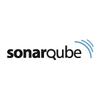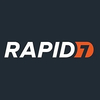Several notable options are available in the DAST and vulnerability scanning tools market. We selected the top alternatives to Tenable Nessus based on our research and DAST benchmark. Follow the links for the rationale behind each selection:
| Software | For | |
|---|---|---|
1. | Web application scanning | |
2. | Penetration testing | |
3. | Vulnerability Management | |
4. | Code quality inspection | |
5. | Identifying & tracking vulnerabilities | |
See the features and attributes of alternatives to Tenable Nessus:
| Vendor | Rating* | Staff | Price |
|---|---|---|---|
| Invicti | 4.6 based on 72 reviews | 300 | Not shared publicly |
| PortSwigger Burp Suite | 4.8 based on 136 reviews | 190 | From $2k to $250k per year depending on scan frequency and cloud vs on-prem deployment. Provides a free version. |
| Tenable Nessus | 4.6 based on 357 reviews | 2,100 | 3 pricing edition(s), from $3,590 to $5,290 annually. |
| AlienVault USM (From AT&T Cybersecurity) | 4.5 based on 126 reviews | 10,000 | Essentials Edition $12,900 annually. Standard Edition $20,340 annually. Premium edition $31,140 annually |
| SonarQube | 4.5 based on 112 reviews | 500 | Has “Open-source Community” “Developer”, “Enterprise”, and “Data Center” plans. Price per lines of code. |
| InsightVM | 4.4 based on 94 reviews | 2,700 | Pricing is asset-based (at least 512 assets). |
*Ranking is based on the review ratings, except Invicti, which is a sponsor of AIMultiple.
All products offer free trials.
Comparison of Differentiating Features
| Vendor | WAF Integration | OAuth 2.0 Integration |
|---|---|---|
| Invicti | ✅ | ✅ |
| PortSwigger Burp Suite | ❌ | ❌ |
| Tenable Nessus | ✅ | ❌ |
| AlienVault | ✅ | ✅ |
| InsightVM Rapid7 | ❌ | ❌ |
See the core features of the selected software.
Vendor selection criteria
- 100+ employees
- 50+ reviews with at least an average of 4.0/5 on B2B review platforms.
Overview of Tenable Nessus
Company Information
Tenable Network Security, established in 2002 in Columbia, Maryland, is a cybersecurity solutions provider. The company offers vulnerability assessment services and has established a global presence with additional offices in Ireland, France, the United Kingdom, Singapore, and Japan.
Ownership and Financial Track
Initially, Tenable was a privately held company supported by venture capital investments from firms such as Accel Partners and The Carlyle Group. In July 2018, Tenable transitioned to a public company through an initial public offering (IPO), and it is now listed on the NASDAQ under the ticker symbol TENB. The move to go public was part of Tenable’s strategy to expand its market presence and access greater financial resources.
Top Alternatives
Invicti
Invicti’s Dynamic Application Security Testing (DAST) tool is tailored to enhance enterprise-level web application security. It focuses on automating security tasks within the Software Development Life Cycle (SDLC), including identifying critical vulnerabilities and integrating solutions for their remediation.
The software is designed to give a comprehensive overview of application security. It utilizes both dynamic and interactive scanning methods (DAST + IAST) to detect vulnerabilities that might be missed by other tools.
Invicti’s DAST solution can be deployed on-prem, in public or private clouds, or in hybrid environments. It also offers a Web Application Firewall and OAuth 2.0 integration, enhancing its protective capabilities.
Pros
- Invicti offers detailed vulnerability scans with remediation guidance, supporting complex web application architectures and maintaining a low false positive/negative rate.
- The tool provides options for multiple scans concurrently, predefined scan policies for ease of use, and gives users detailed and understandable scan reports.
- Users highlight the fast, helpful support team, intuitive interface, and ability to customize security checks and scan profiles as major advantages.
Cons
- Invicti’s licensing tied to URLs is strict, making license retrieval challenging if mistakes are made.
- The tool lacks support for 2FA or MFA applications and struggles with various authentication mechanisms, presenting issues particularly with PKI infrastructures.
- Users have reported significant resource consumption during scans, causing system slowdowns and potential challenges with larger web applications.
PortSwigger Burp Suite
PortSwigger’s Burp Suite is a security testing tool designed for web applications, emphasizing both automated and manual DAST. It combines these approaches and extends its capabilities by including Out-of-band Application Security Testing (OAST) to improve the detection of certain types of vulnerabilities. Burp Suite is available in various editions—Professional, Enterprise, and Community—each crafted to meet the distinct demands and operational scales of different users.
PortSwigger is popular among professionals aiming to advance their penetration testing skills. As it is generally focused on aiding professional testers. Thus, the user interface of Burp Suite can be challenging for those without technical expertise, which may steepen the learning curve for new users.
Pros
- Comprehensive range of tools for web application security testing, catering to both manual and automated workflows.
- Customizable and extensible features, allowing seamless integration into various security testing environments.
- Active community and frequent updates ensure relevance to evolving security threats.
Cons
- Steep learning curve for users unfamiliar with advanced security tools.
- High cost of the Professional Edition, which might not be accessible for smaller teams or individuals.
- Significant resource consumption during scans, potentially impacting system performance.
InsightVM by Rapid7
InsightVM by Rapid7 is a vulnerability management tool designed to identify risks across IT environments. It utilizes Rapid7’s vulnerability research, insights into global attacker behavior, and data from internet-wide scanning.
The platform also integrates with Rapid7’s Metasploit to validate potential exploits, enhancing its effectiveness in risk detection. InsightVM includes features like live monitoring and the ability to assess assets across cloud, virtual, and container environments, which makes it adaptable to various dynamic IT infrastructures.
Pros
- InsightVM provides real-time network visibility, integrates with multiple security tools, and supports automated remediation workflows.
- It offers user-friendly UI, efficient cloud workload management through agent installation, and has strong dashboard and reporting functionalities.
- Features like asset tagging, remediation projects, and the ability to manage vulnerabilities and patches effectively are highly appreciated by users.
Cons
- Users report the security console is buggy, Jira integration is unreliable and vulnerability identification can be slow.
- Users have difficulty with real-time threat protection, exporting query builder data, and complex API integration.
- Users feel that there are too many false positives leading to unsupported patching instructions.
AlienVault AT&T Cybersecurity
AlienVault’s Unified Security Management (USM) platform combines multiple security capabilities, including asset discovery, vulnerability assessment, intrusion detection, behavioral monitoring, and SIEM. It provides built-in threat intelligence from AT&T Alien Labs that helps organizations stay updated with the latest threat data and respond effectively. The Open Threat Exchange (OTX) community contributes to the enrichment of threat data, enhancing the overall threat detection capabilities.
Pros
- AlienVault USM is appreciated for its central management, built-in tool connections, and ability to process large volumes of logs in real time.
- The platform’s ease of use, customization, and integrations with AWS, Slack, and other SaaS apps are also highlighted positively.
- Users value its monitoring capabilities, its assistance in maintaining PCI compliance, and the availability of custom alarms, filters, and regular scans.
Cons
- USM sensor only allows a single IP for log shipping and lacks auditing for changes to event filtering rules.
- Vulnerability scanning platform doesn’t allow for closing false positives, and the cloud offering lacks log consumption via webhook or API.
- The online portal can occasionally be sluggish and the system lacks integration with third-party tools like Jira.
SonarQube
SonarQube is an open-source platform designed to continuously inspect code quality. It automates code reviews using static analysis to identify bugs, code smells, and security vulnerabilities across more than 20 programming languages. SonarQube also offers various paid versions that include additional features.
Pros
- SonarQube provides static code analysis, supports multiple languages.
- The tool offers detailed code coverage reports, identifies vulnerabilities and bugs, and provides suggestions for code quality improvements.
- SonarQube’s customizable rules, and ability to integrate with IDEs and authentication mechanisms enhances its usability and adaptability.
Cons
- Users experience difficulties with SonarQube’s customer support and integration of third-party plugins for code coverage in Java.
- Some users suggested improvements in the user interface, faster report generation, and an easier process for creating and sharing custom rules.
- SonarQube’s integration into CI/CD pipelines and setting automated alerts were found to be time-consuming, and the requirement for a third-party plugin for code coverage was seen as inconvenient.
Core features of the chosen software
The following features are mostly found in the software we choose in our lists and articles:
- On-Prem Deployment
- Zero-Day Vulnerability Database
- SQL Injection Detection
- Automated Scanning and Scheduling
- Risk-Based Prioritization
- Reporting and Remediation Guidance
We covered these in detail in our vulnerability scanning tools article, follow the link to see a detailed explanation.
What are the differentiating features, and why are they important?
For our picks regarding Tenable Nessus alternatives, the following features were identified as differentiating.
- WAF Integration
- OAuth 2.0 Integration
Please see the importance of these features in detail by the following link, which covers vulnerability scanning tools features in detail.
Why vulnerability scanning tools are crucial?
Vulnerability scanning is essential to a cybersecurity plan, enabling companies to detect, evaluate, and address weaknesses in their network infrastructure. Businesses share that:1
- 42% experiencing external attacks linked these breaches to software security flaws
- 35% traced the issue back to faults in web applications.







Comments
Your email address will not be published. All fields are required.